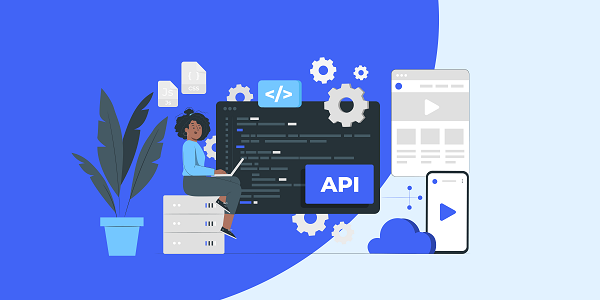Residential Proxies
Allowlisted 200M+ IPs from real ISP. Managed/obtained proxies via dashboard.

Proxies
Residential Proxies
Allowlisted 200M+ IPs from real ISP. Managed/obtained proxies via dashboard.
Residential (Socks5) Proxies
Over 200 million real IPs in 190+ locations,
Unlimited Residential Proxies
Use stable, fast, and furious 700K+ datacenter IPs worldwide.
Static Residential proxies
Long-lasting dedicated proxy, non-rotating residential proxy
Dedicated Datacenter Proxies
Use stable, fast, and furious 700K+ datacenter IPs worldwide.

Web Unblocker
View content as a real user with the help of ABC proxy's dynamic fingerprinting technology.
Proxies
API
Proxy list is generated through an API link and applied to compatible programs after whitelist IP authorization
User+Pass Auth
Create credential freely and use rotating proxies on any device or software without allowlisting IP
Proxy Manager
Manage all proxies using APM interface

Proxies
Residential Proxies
Allowlisted 200M+ IPs from real ISP. Managed/obtained proxies via dashboard.
Starts from
$0.77/ GB
Residential (Socks5) Proxies
Over 200 million real IPs in 190+ locations,
Starts from
$0.045/ IP
Unlimited Residential Proxies
Use stable, fast, and furious 700K+ datacenter IPs worldwide.
Starts from
$79/ Day
Rotating ISP Proxies
ABCProxy's Rotating ISP Proxies guarantee long session time.
Starts from
$0.77/ GB
Static Residential proxies
Long-lasting dedicated proxy, non-rotating residential proxy
Starts from
$5/MONTH
Dedicated Datacenter Proxies
Use stable, fast, and furious 700K+ datacenter IPs worldwide.
Starts from
$4.5/MONTH
Knowledge Base
English
繁體中文
Русский
Indonesia
Português
Español
بالعربية


Common reasons and risk characteristics for IP address blocking
IP address blocking is usually triggered by the target server's anti-crawling mechanism, network security policy or regional restrictions. The core causes include:
High-frequency access behavior: The same IP makes excessive requests in a short period of time (e.g., more than 10 times per second)
Abnormal traffic characteristics: fixed request interval, lack of browser fingerprint, incomplete header information
Geofencing restrictions: some services are only accessible to IP addresses in certain countries
Protocol violation: Violation of the website's robots.txt rules or terms of service (such as automatic account registration)
A typical blockade is characterized by the following responses:
HTTP 403 Forbidden or 429 Too Many Requests status code
CAPTCHA verification codes pop up frequently
The service response delay increases (more than 5 seconds)
Access to certain functional modules is restricted (e.g. unable to load price data)
Four-step diagnostic method to confirm IP blocking status
1. Basic connectivity test
ping target-domain.com
traceroute target-domain.com
If "Request timed out" or abnormal hops occur, the network layer may be blocked.
2. Multi-environment cross-validation
Use mobile networks and different Wi-Fi environments to access target services
Test access through an online proxy tool such as HideMyAss
Compare the differences in access status before and after VPN switching
3. Protocol-level detection tools
Analysis of curl command:
curl -v -A "Mozilla/5.0" https://target-domain.com
Check whether the X-Forwarded-For, CF-RAY and other fields in the returned header contain proxy features.
Browser developer tools:
Monitor the Waterfall timing in the Network panel to identify intercepted request chains.
4. Third-party testing platform
Use tools such as IPQS (IP Quality Score) or Scamalytics to check the IP reputation score (if the score is below 85, it may be flagged).
Technical solutions for removing IP blocking by scenario
Scenario 1: Enterprise-level data collection ban
Solution:
Dynamic proxy pool construction:
Use abcproxy residential proxy service and configure automatic IP rotation rules (such as changing IP every 50 requests)
Example configuration:
import requests
proxies = {
"http": "http://user:pass@gateway.abcproxy.com:8000",
"https": "http://user:pass@gateway.abcproxy.com:8000"
}
response = requests.get(url, proxies=proxies, timeout=10)
Traffic feature camouflage:
Set the randomization request interval (1-30 seconds normal distribution)
Load 2000+ User-proxy rotation library
Enable TLS fingerprint obfuscation technology
Scenario 2: Social media account unblocking
Operation process:
Clear local browser fingerprints (including Cookies, LocalStorage)
Get a new IP through abcproxy static ISP proxy (it is recommended to choose the same IP segment as the account registration location)
Use a new device fingerprint to log in (recommended with Multilogin or Linken Sphere)
Gradually resume account activity (operations on the first day should not exceed 20% of the usual frequency)
Scenario 3: Cross-border service access restrictions
Breakout strategy:
Protocol tunnel construction:
Use Shadowsocks over WebSocket protocol to penetrate firewalls and optimize links with Singapore/Japan data center proxies
DNS Pollution Avoidance:
Configure DoH (DNS-over-HTTPS) to use Cloudflare or Google's encrypted DNS service
Six technical measures to prevent IP blocking in the long term
Hierarchical proxy architecture:
Build a two-layer forwarding model of "residential proxy (entry layer) → data center proxy (processing layer)" to physically isolate the business IP and the target server
Intelligent traffic scheduling algorithm:
if response time > 2s:
Reduce request concurrency by 50%
Switching to the backup proxy pool
elif a verification code appears:
Enable OCR recognition module
Inject mouse movement trajectory parameters
Hardware fingerprint simulation:
WebGL renderer fingerprint randomization
Canvas noise injection (difference > 5%)
Audio context fingerprint obfuscation
Protocol stack deep customization:
Modify TCP Window Scaling
Randomized Initial Sequence Number (ISN) Generation Algorithm
Enable HTTP/2 protocol multiplexing
Dynamic management of blacklist and whitelist:
Establish an IP reputation evaluation system to automatically move proxy IPs with abnormal responses into a cooling pool (cooling time ≥ 4 hours)
As a professional proxy IP service provider, abcproxy provides a variety of high-quality proxy IP products, including residential proxy, data center proxy, static ISP proxy, Socks5 proxy, unlimited residential proxy, suitable for a variety of application scenarios. If you are looking for a reliable proxy IP service, welcome to visit the abcproxy official website for more details.
Featured Posts
Popular Products
Residential Proxies
Allowlisted 200M+ IPs from real ISP. Managed/obtained proxies via dashboard.
Residential (Socks5) Proxies
Over 200 million real IPs in 190+ locations,
Unlimited Residential Proxies
Use stable, fast, and furious 700K+ datacenter IPs worldwide.
Rotating ISP Proxies
ABCProxy's Rotating ISP Proxies guarantee long session time.
Residential (Socks5) Proxies
Long-lasting dedicated proxy, non-rotating residential proxy
Dedicated Datacenter Proxies
Use stable, fast, and furious 700K+ datacenter IPs worldwide.
Web Unblocker
View content as a real user with the help of ABC proxy's dynamic fingerprinting technology.
Related articles

Why do you need a dedicated proxy IP to buy shoes on SNKRS
This article analyzes the core role of dedicated proxy IP in SNKRS snap-ups, explores how to improve the success rate through proxy IP technology, and introduces how abcproxy provides professional solutions for sneaker enthusiasts.

How to search for Taobao products through pictures
This article analyzes the implementation logic of Taobao's image search technology, explores practical methods to improve search efficiency, and explains the application value of proxy IP services in e-commerce data collection, and recommends abcproxy professional proxy solutions.